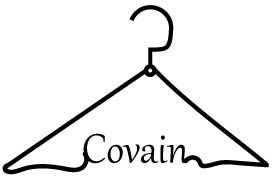
Introduction
Dealing with ingrown hairs can be both painful and frustrating. Whether you shave, wax, or use other hair removal methods, ingrown hairs can occur, causing redness, irritation, and even infections. However, with the right knowledge and practices, you can effectively prevent and treat ingrown hairs, allowing you to enjoy smooth, bump-free skin. As a model with sensitive skin, I know how frustrating it is to do something to get rid of hair so I’m smooth but then it creates another issue. In this guide, we’ll explore various methods to deal with ingrown hairs and strategies to avoid them altogether.
Understanding Ingrown Hairs:
Before diving into prevention and treatment, it’s crucial to understand what ingrown hairs are and why they occur. Ingrown hairs happen when a hair curls back or grows sideways into the skin instead of upward. This often occurs after hair removal, as the hair follicle may become blocked by dead skin cells or oil, forcing the hair to grow abnormally.
Prevention Strategies:
- Exfoliate Regularly: One of the most effective ways to prevent ingrown hairs is by exfoliating the skin regularly. Use a gentle exfoliating scrub or brush to remove dead skin cells and prevent them from clogging the hair follicles. Try exfoliating right before a hair removal treatment and again the day after hair removal. Try out Forever Green Body Scrub. Use code COVAINOFFICIAL for a 10% discount.
- Choose the Right Hair Removal Method: Different hair removal methods can affect the likelihood of ingrown hairs. Consider options like shaving with the grain, using depilatory creams, or opting for laser hair removal, which can reduce the risk of ingrown hairs.
- Keep Skin Hydrated: Moisturized skin is less prone to irritation and inflammation, reducing the likelihood of ingrown hairs. Use a hydrating lotion or oil after hair removal to keep the skin soft and supple. Stay away from perfumed moisturizers for a few days after a hair removal treatment. Try out this Organic Shea Butter and this Unscented Body Lotion.
- Use Sharp Razors: Dull razors can cause irritation and increase the risk of ingrown hairs. Replace your razor blades regularly and ensure they’re sharp to achieve a clean shave without damaging the hair follicles. Make sure to dry off a razor after you use it so it doesn’t rust.
Avoid Tight Clothing: Wearing tight clothing can contribute to ingrown hairs, especially in areas like the bikini line and underarms. Opt for loose-fitting clothing, especially for a few days after hair removal, to allow the skin to breathe and reduce friction.
Treatment Options:
- Warm Compress: Apply a warm compress to the affected area to help soothe irritation and encourage the hair to come to the surface. This can also help reduce swelling and discomfort associated with ingrown hairs.
- Gentle Exfoliation: Use a soft-bristled brush or exfoliating scrub to gently exfoliate the skin and encourage the ingrown hair to emerge. Avoid aggressive scrubbing, as this can further irritate the skin.
- Topical Treatments: Over-the-counter creams or serums containing ingredients like salicylic acid or glycolic acid can help unclog pores and reduce inflammation associated with ingrown hairs. Apply these treatments directly to the affected area as directed.
- Avoid Picking: While it may be tempting to pick at ingrown hairs, doing so can lead to infection and scarring. Instead, allow the hair to grow out naturally or seek professional help if the skin is severely irritated.
- Seek Professional Help: If ingrown hairs persist or become infected, consult a dermatologist for further evaluation and treatment options. They may recommend procedures like laser hair removal or corticosteroid injections to alleviate symptoms and prevent recurrence.
Read about Natural Ingrown Hair Treatments.
Introduction
Dealing with ingrown hairs can be a frustrating experience, but with the right preventative measures and treatment strategies, you can effectively manage them and enjoy smooth, healthy skin. Remember to exfoliate regularly, choose the right hair removal method, and seek professional help if needed. Allowing a good amount of time in between hair removal is key to give your skin time to calm down and heal before another one. By taking proactive steps to prevent and treat ingrown hairs, you can say goodbye to bumps and irritation, allowing you to embrace your skin with confidence.
Author: Danielle N. Mott
